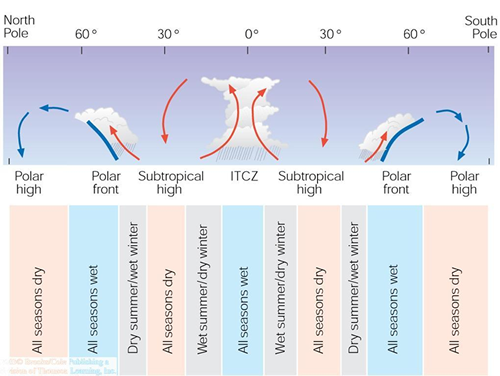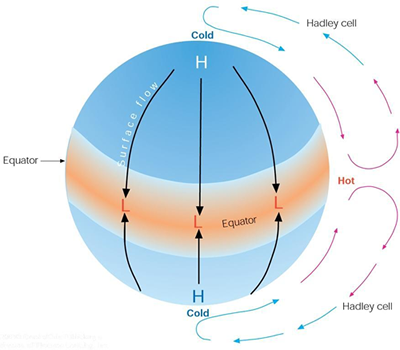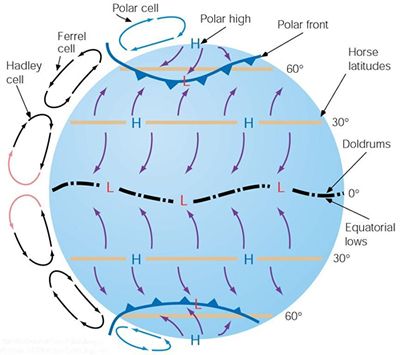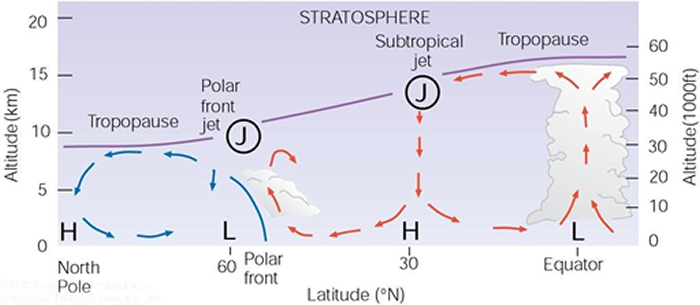
Recall from our energy budget summary that our "model" resulted in a balanced energy system in the vertical, but an unbalanced energy distribution in terms of latitude. An energy surplus results near the equator while an energy deficit would occur in regions near the poles. If left "as is" this would lead us to expect an equatorial region that continually and gradually warms, and polar regions that will continually and gradually cool. this does not match our experience or observation. That is to say, the climate (long-term averages of temperature, precipitation, wind speed and direction, humidity, etc.) remains "reasonably" stable.
As we go about trying to theorize how this imbalance is righted, we note one other observation that is depicted in the figure below. There is considerable evidence of latitudinal bands of precipitation tendency, some seasonally dependent, others not. They seem to be correlated with surface pressure bands as well.


As the top air over the equator moves polar-ward, it is replaced by air in the vertical column beneath its original spot. In fact, all of the air in that vertical column moves up, creating a "vacuum" near the surface. This empty spot is quickly filled by surface air sliding equator-ward. Eventually a closed circulation loop, or "cell", is created, appropriately named a "Hadley Cell."
This theory explains how the energy imbalance is corrected, but provides no mechanism for the formation of the precipitation and pressure bands mentioned above.

The splitting of the single cell may be due to a combination of at least two factors. The first is the rotation of the earth on its axis. Lab experiments on appropriately scaled models confirm rotation is capable of this three-cell inducement. Another contributing factor is the radiative cooling of the upper most air as it travels pole-ward. This cooling causes the air to increase in density, which leads to sinking motion.
An important related feature of this three cell circulation is the polar front, as seen in the figure above. Note that the surface winds associated with the Ferrel cell and the Polar cell meet almost head-on in the 60 degree north latitude band. This results in an abrupt change in temperature, and other air mass characteristics, over a relatively short distance. The rapid change in temperature at the surface steepens the downhill slope of the atmosphere's top, leading to an increase in upper air wind speed over the front. This faster flowing stream of air is known as the "polar jet," as shown in the figure below. It is along this high energy stream that mid-latitude cyclones form. These storms are born in the instability associated with the polar jet, and feed off the energy within the stream. The counterclockwise circulation associated with these storms enhance the energy transfer required to balance the latitudinal radiation inequity that drives (forces) the circulation.

A similar, but less-well defined and intense, subtropical jet forms as a consequence of the three cell model. This jet may intensify at times during an el nino season resulting in increased storminess for Texas and other gulf coast states. It is along this jet that the "storm of the century" in March of 1993 developed. The explosive stormed spawned numerous tornadoes as it crossed the Florida peninsula. It headed north-northeast leaving extensive freezing rain and record snowfall in its wake as it buffeted the eastern one-third of the US and portions of Canada.